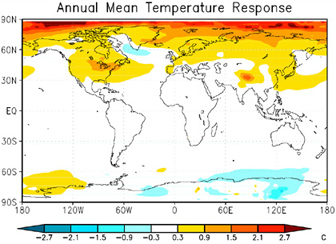Dirty snow may warm Arctic as much as GHG emissions
Dirty snow may warm Arctic as much as GHG emissions
mongabay.com
June 7, 2007
Dirty snow from soot and forest fires is responsible for one-third or more of Arctic warming reports a new study from researchers at the University of California at Irvine (UCI) and the National Center for Atmospheric Research in Boulder.
While bright surfaces like pristine snow reflect sunlight back into space causing cooling, dirty snow does the opposite, absorbing more sunlight, causing warming.
“When we inject dirty particles into the atmosphere and they fall onto snow, the net effect is we warm the polar latitudes,” said Charlie Zender, associate professor of Earth system science at UCI and co-author of the study. “Dark soot can heat up quickly. It’s like placing tiny toaster ovens into the snow pack.”
Writing in the Journal of Geophysical Research, the researchers report that dirty snow is responsible for 0.5 to 1.5 degrees of the observed 1.6-degree rise in temperature in the Arctic during the past two centuries.

Annual mean temperature change due to dirty snow in degrees Celsius. |
“A small amount of snow impurities in the Arctic have caused a significant temperature response there,” said Zender.
The researchers note that melting snow can expose “underlying sea ice or soil that is significantly darker than the snow” resulting in further warming.
“Once the snow is gone, the soot that caused the snow to melt continues to have an effect because the ground surface is darker and retains more heat,” Zender said.
Zender recommends the use of cleaner burning fuel to reduce the dirty snow warming effect.
This article is based on a UCI news release.